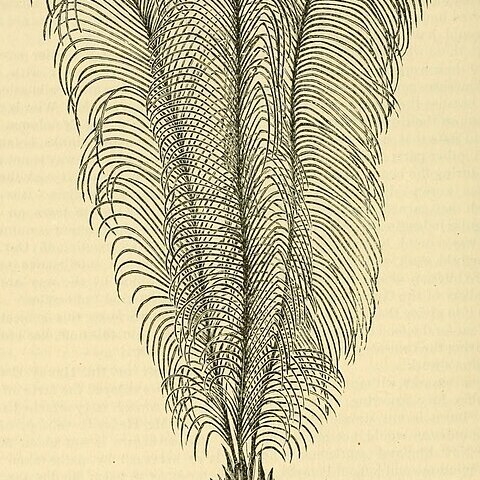A small cycad. It has an oval underground trunk. This is 25 cm long and 20 cm across. The young leaves are light green and erect. There are 1-6 mature leaves in an erect open crown. They are 0.5-1.2 m long by 30-50 cm wide. The are dark green and dull. The stalk is twisted making the leaflets look as if they are in rings. The leaf stalk is 5-15 cm long. There are 140-200 leaflets on each leaf. The cones are different. The male cone is 10-20 cm long by 4-6 cm wide. They are usually curved and green. There are 1-3 per plant. The female cones are 8-15 cm long by 6-8 cm wide and barrel shaped. They are green and there are 1-2 per plant. The seeds are 2-2.5 cm long by 1.5-2 cm wide. They are oval and orange or red.


